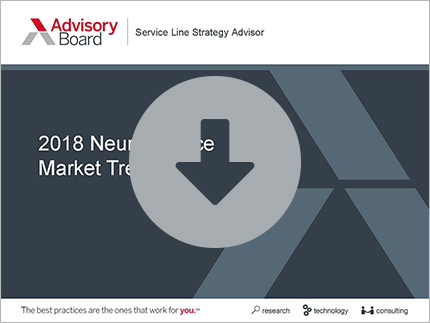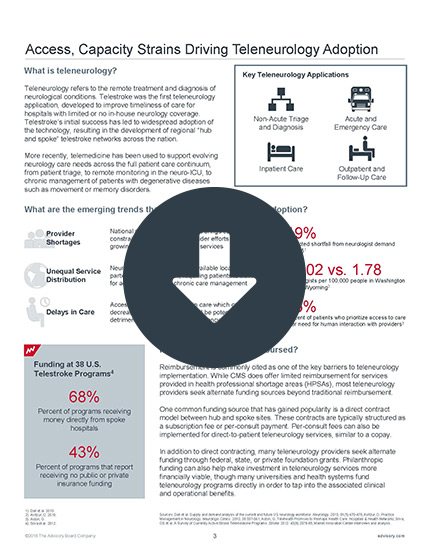Auto logout in seconds.
Continue LogoutRead Advisory Board's take on this story.
Electronically stimulating the brain's prefrontal cortex might reduce how likely a person is to engage in a violent act, according a study published last week in the Journal of Neuroscience—but several experts are not convinced, and others are raising concerns as to how such methods, if proven, could be applied, Sharon Beley reports for STAT News.
Study details
For the study, researchers at the University of Pennsylvania conducted a double-blind, placebo-controlled, randomized trial to assess whether electrically stimulating people's dorsolateral prefrontal cortex using transcranial direct current stimulation (tDCS) reduces their likelihood of engaging in aggressive acts. Previous research has linked smaller or less active dorsolateral prefrontal cortices, the part of the brain behind the top of the forehead, to antisocial and aggressive behavior.
The researchers randomly assigned 81 adult participants, average age 20, to a control and test group. Each group had two scalp electrodes placed on their heads. The control group received a low current to their dorsolateral prefrontal cortex for 30 seconds and then nothing. The test group had their dorsolateral prefrontal cortex stimulated for 20 minutes using tDCS.
Download our updated neuroscience clinical technology compendium
Researchers the next day had participants in both groups read vignettes of two violent acts. One involved a man who had smashed a beer bottle over a person's head and the other involved an assailant who had sexually assaulted an acquaintance. The researchers asked the study participants to rate how likely they were to engage in such an aggression on a scale from one ("no chance") to 10 ("definitely").
The researchers also assessed participants' behavior using a common lab test in which participants could stick pins in a computer image of a doll that represented one of their close friends.
Findings
The researchers found those who had their brains stimulated using tDCS reported a 47% lower likelihood of breaking the beer bottle over a person's head when compared with those who did not have their brains stimulated using tDCS. On the one to 10 scale, the brain stimulated group rated their likelihood of committing the non-sexual assault at 1.15 while the control group rated their likelihood of committing the act at 2.19.
In terms of the sexual assault, the researchers found the group who had their brains stimulated using tDCS reported a 70% lower likelihood of committing the crime when compared with those who did not have their brain stimulated using tDCS. On the one to 10 scale the brains stimulated group rated their likelihood of committing the sexual assault at 0.26, while the control group rated their likelihood of committing the sexual assault at 0.86.
The researchers also found the group who had their brains stimulated using tDCS rated both assaults as more morally wrong than the group who did not have their brain stimulated using tDCS.
However, the researchers found the study participants who had their brains stimulated using tDCS were slightly more likely to engage in more aggressive behavior than those who did not have their brain stimulated using tDCS. The researchers found those who had their brain stimulated stuck a few more pins in the image of their friend than those who did not have their brain stimulated.
The researchers concluded that their findings provide evidence that "increasing activity in the prefrontal cortex can reduce intentions to commit aggression and enhance perceptions of moral judgment."
Discussion
Robin Mackenzie, a scholar of medical law and ethics at University of Kent in England, called the study's findings "promising and suggestive," adding that the study "advances … the field of biological interventions on antisocial and aggressive behavior."
Adrian Raine, a psychologist at the University of Pennsylvania, said researchers are "trying to find benign biological interventions [for criminal violence] that society will accept. Transcranial direct-current stimulation is minimal risk. This isn't a frontal lobotomy."
However, several experts, including Mackenzie, have pointed to flaws in the methodology and raised concerns over how the findings are being interpreted.
For example, Mackenzie noted that none of the study participants had a history of psychiatric or neurologic disease or injury, which she said means it is "an open question" as to whether tDCS would affect such people.
Separately, Paul Appelbaum, director of the Division of Law, Ethics, and Psychiatry at Columbia University's Vagelos College of Physicians and Surgeons, said, "What people say they will do with regard to violence and what they actually do may be two different things. Whether actual violence would be reduced [by brain stimulation] is unknown," but "the data suggest no impact" on acts of aggression.
Olivia Choy, the lead author of the paper and a psychologist at Nanyang Technological University in Singapore, noted that study participants had their brains stimulated for 20 minutes, which might mean "that repeated sessions over a longer time period could produce changes in behavior," particularly because "changes in behavior start with changing intent."
Mackenzie also questioned whether gender differences between the test and placebo group could have influenced each group's attitudes toward the violent events, particularly the sexual assault scenario. In the study, 24 women and 14 men had their brain stimulated, while there were 21 women and 21 men in control group. "Asking female participants to identify with a rapist to assess how likely they would be to rape a woman is inherently different from asking male participants to do so," Mackenzie said.
Experts said the study's findings also raise questions about how tDCS could be applied, if proven. For instance, experts questioned whether governments would use on the stimulation on violent offenders and how such use would be implemented (Begley, STAT News, 7/2).
Advisory Board's take

Sarah Musco, Senior Consultant, Service Line Strategy Advisor Neuroscience Team
While the results of this study are somewhat mixed, they reflect the growing interest of the scientific community in investigating neurostimulation for a number of behavioral and clinical uses.
We've seen the same increasing interest in neurostimulation among providers. While the use of neurostimulation has long been popular for certain conditions, such as deep brain stimulation for Parkinson's disease, vagus nerve stimulation for epilepsy and spinal cord stimulation for pain management, a variety of other clinical uses are gaining traction.
We attribute the growth in interest in neurostimulation to three factors:
- Improved neuroimaging and a better understanding of how electrical signals travel through the brain have enhanced the technology itself;
- Many neurostimulation devices have recently received expanded indications and ongoing clinical trials are exploring its additional therapeutic properties; and
- The opioid epidemic is driving physicians and patients to search for alternative approaches to pain management.
For providers interested in growing their neurostimulation program, we suggest three tactics to ensure the viability of the program:
- Ensure that you understand eligibility and preauthorization requirements. Insurance companies and Medicare require patients to meet several conditions to qualify for coverage of neurostimulation procedures. To make sure patients are covered, ensure your program has a firm understanding of the preauthorization requirements.
- Build relationships with and educate PCPs to garner referrals. Since many neurostimulation procedures are relatively new, many PCPs aren't aware of their clinical promise. Therefore, organizations can work to educate PCPs and garner referrals for their target consumers, including those with chronic pain, Parkinson's, epilepsy, sleep apnea, migraine headaches, and affective disorders.
- Advertise to self-pay patients for experimental applications. Many types of stimulation are covered for one use but have other experimental uses. For instance, vagus nerve stimulation is covered by both Medicare and private insurers for epilepsy, but is rarely covered for depression, one of the device's experimental applications. Therefore, attracting self-pay patients is particularly important to maintain the financial viability of the technology beyond research settings and covered uses.
To learn more about the latest technology in neurosciences, download our updated neuroscience clinical technology compendium.
Don't miss out on the latest Advisory Board insights
Create your free account to access 1 resource, including the latest research and webinars.
Want access without creating an account?
You have 1 free members-only resource remaining this month.
1 free members-only resources remaining
1 free members-only resources remaining
You've reached your limit of free insights
Become a member to access all of Advisory Board's resources, events, and experts
Never miss out on the latest innovative health care content tailored to you.
Benefits include:
You've reached your limit of free insights
Become a member to access all of Advisory Board's resources, events, and experts
Never miss out on the latest innovative health care content tailored to you.
Benefits include:
This content is available through your Curated Research partnership with Advisory Board. Click on ‘view this resource’ to read the full piece
Email ask@advisory.com to learn more
Click on ‘Become a Member’ to learn about the benefits of a Full-Access partnership with Advisory Board
Never miss out on the latest innovative health care content tailored to you.
Benefits Include:
This is for members only. Learn more.
Click on ‘Become a Member’ to learn about the benefits of a Full-Access partnership with Advisory Board
Never miss out on the latest innovative health care content tailored to you.


